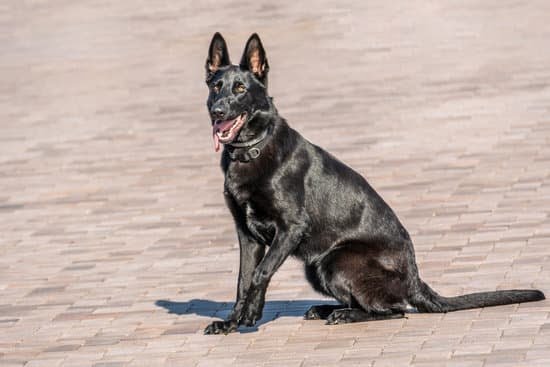How To Train Service Dogs For Others
Service dogs can be lifesavers for people with disabilities, but they must be well-trained. Here are some tips on how to train service dogs for others.
1. Start with basic obedience commands. Before you can train a service dog to help someone with a disability, he or she must be able to obey basic commands such as sit, stay, come, and down. Make sure your dog knows these commands before you start working on more specialized tasks.
2. Train your dog to perform specific tasks. Once your dog is obedient, you can start teaching him or her to perform specific tasks that will help the person with a disability. For example, a service dog may be trained to open doors, pick up dropped items, or help a person get up from a chair.
3. Be patient and consistent. Training a service dog can be time consuming, but it’s important to be patient and consistent. Make sure you are consistent with your commands and rewards, and be patient as your dog learns new tasks.
4. Seek help if needed. If you’re having trouble training your service dog, don’t be afraid to seek help from a professional dog trainer. There are many experts who can help you get your dog ready to help someone with a disability.
How To Train My Lab To Be A Service Dog
Now that you have brought home your new furry friend, it is time to begin training him to become a service dog. This process can be challenging, but with patience and perseverance, you can successfully train your lab to become a service dog.
The first step in training your lab to become a service dog is to create a positive association between the dog and the tasks he will be performing. When you are first starting to train your lab, always use positive reinforcement, such as treats or praise, when he completes a task. This will help create a strong bond between you and your dog, and will make training him much easier.
Next, you will need to start teaching your lab the basic commands he will need to know in order to be a service dog. The most important commands to teach your lab are “sit,” “stay,” and “come.” These commands will be essential in helping your dog stay calm and under control in difficult situations.
In addition to basic commands, you will also need to train your lab to perform specific tasks that he will be used for as a service dog. Some of the tasks your lab may need to learn include retrieving items, opening doors, and helping you get up if you fall down. It is important to start training your lab for these tasks as soon as possible, as they will take time and practice to perfect.
Finally, you will need to make sure your lab is socialized with other people and dogs. This is important, as a service dog will need to be comfortable interacting with both humans and other animals. socialization will help your lab learn how to behave around other people and animals, and will help prevent him from becoming aggressive or fearful.
By following these steps, you can successfully train your lab to become a service dog. With patience and dedication, your lab will be able to provide invaluable assistance to you or your loved one.
Can I Use My Own Dog For Va Service Training
The short answer is no.
The longer answer is that in order to use a service animal, an individual must have a disability and the service animal must be individually trained to perform tasks or work for the individual with the disability. There is no specific federal definition of what tasks or work a service animal must perform, but in general, service animals are trained to do things like provide balance and stability for people with mobility impairments, guide people who are visually impaired, alert people who are deaf or hard of hearing to sounds, and perform other tasks that help people with disabilities live more independently.
In order to use a service animal, an individual must have a disability and the service animal must be individually trained to perform tasks or work for the individual with the disability.
Some people may try to use their pet dog as a service animal by training the dog themselves, but this is not allowed. The Department of Justice has made it clear that only specially trained animals can be considered service animals.
There are a number of reasons why using a pet dog as a service animal is not allowed. First, it is important that service animals are able to perform the tasks or work they are trained to do, and pet dogs are not typically trained to do this. Second, it is important that service animals are able to be in public places and interact with the public, and pet dogs are often not comfortable or well-behaved in public. Finally, allowing pet dogs into places where service animals are allowed can create confusion and problems for people with disabilities who rely on their service animals.
So, while it is tempting to use one’s pet dog as a service animal, this is not allowed and can be dangerous for the person with the disability. It is important to find a properly trained service animal to help with specific needs.
How To Become Service Dog Training
Expert
There are many important things to consider when becoming a service dog training expert. Perhaps the most important decision is deciding what type of service dog you would like to train. Service dogs can provide many different types of assistance to people with disabilities, so it is important to choose the type of service dog that you feel best suited to train.
Once you have decided what type of service dog you would like to train, you will need to get the appropriate training. There are many different types of service dog training available, so it is important to find a program that is reputable and will provide you with the necessary skills to train a service dog.
Once you have completed a reputable service dog training program, it is important to get as much experience as possible training service dogs. This can be done by volunteering with a service dog organization, or by working with private clients who need service dogs.
When you feel confident in your ability to train service dogs, you can begin to offer your services as a service dog trainer. There are many ways to find clients who need service dogs, such as through online directories or by word of mouth.
If you are successful in becoming a service dog trainer, it is important to stay up to date on the latest training techniques and methods. This can be done by attending workshops and seminars, or by reading articles and blogs about service dog training.
By following these tips, you can become a successful service dog trainer and help people with disabilities to lead more independent lives.
How Do You Train A Diabetic Service Dog
There is no one-size-fits-all answer to this question, as the training of diabetic service dogs will vary depending on the individual dog’s needs and abilities. However, some general tips on how to train a diabetic service dog may include teaching the dog to recognize when their owner is having a low blood sugar episode, and then helping them to take action to correct the situation.
One of the most important things to remember when training a diabetic service dog is that dogs are very good at reading their owner’s body language, so positive reinforcement and consistent training is key. Dogs need to be taught how to respond to low blood sugar episodes specifically, so it is important to work with your veterinarian or a certified dog trainer to create a training program that is tailored to your dog’s needs.
Some common methods of training diabetic service dogs include basic obedience commands such as sit, stay, come, and down, as well as specific commands related to diabetes such as “find sugar” or “get help.” Dogs may also be trained to retrieve objects such as a glucose meter or a bottle of juice, and to perform tasks such as bringing a wheelchair to their owner or waking them up from a low blood sugar episode.
The most important thing is to be patient and consistent with your dog’s training, as diabetic service dogs can take time to learn all of the necessary commands. With hard work and dedication, however, you can create a lifelong partner who will help keep you safe and healthy.

Welcome to the blog! I am a professional dog trainer and have been working with dogs for many years. In this blog, I will be discussing various topics related to dog training, including tips, tricks, and advice. I hope you find this information helpful and informative. Thanks for reading!





